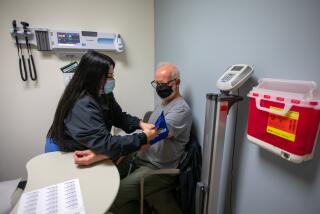Dworkin on Price of Life
* Regarding the “Price of Life” by Ronald Dworkin, Opinion, Aug. 29:
Making heart-wrenching choices about medical care is not unfamiliar to me. Professionally I am a nurse with 16 years experience caring for adults, and most recently, sick newborns. Personally, I am the mother of a little girl born with multiple anomalies, who I cared for at home without heroic medical intervention, until her death at the age of 3. Decisions about who will receive what kind of medical treatment are made daily by caring teams of care-givers and courageous families. The future challenges of the medical dollar well spent will necessitate much more thought in this area.
Dworkin’s reasoning for deciding who will be treated is callous and inhumane. He suggests we assign importance and allocate care based on “the investment others have made” in that life and the investments the individual himself has made. And how is “investment” to be measured? Will more importance be assigned the aging, divorced CEO, the well-educated, young professional mother of one, the single mother of three on welfare, or the 5-year-old child?
It is unthinkable to give or withhold medical treatment, and then diminish the sorrow and pain experienced by any family based on the age or station of that person. This devalues all human life. Let us not make these choices based on some arbitrary scale of individual importance, rather on the merit of the treatment benefit based on medical facts.
CAROLYN KANOW
Newport Beach
* The story of the Lakeberg Siamese twins raises vital issues even as it tugs on our heartstrings. Dworkin’s careful analysis effectively raises some of these issues, like balancing expected outcome against enormous cost.
Interestingly, Dworkin misses a key element of this case--the importance of effective communication, treatment and follow-through early in a medical situation. Care-givers need to take an interest in the outcome.
The Siamese twins were identified by an ultrasound test in the fourth month of pregnancy. The couple was advised to have an abortion and reluctantly agreed. But there was no medical follow-through or communication. Lacking health insurance, the Lakebergs drove to an abortion clinic in Chicago. The clinic was not equipped for such an unusual pregnancy and sent the mother home.
Had the doctor who advised an abortion personally taken an interest and facilitated the procedure, the outcome would have been entirely different. Although medical technology has made incredible progress, effective communication between doctor and patient has diminished. If technology is not to ruin us, the human bond must be restored.
BETTY RASKOFF KAZMIN
Los Angeles
